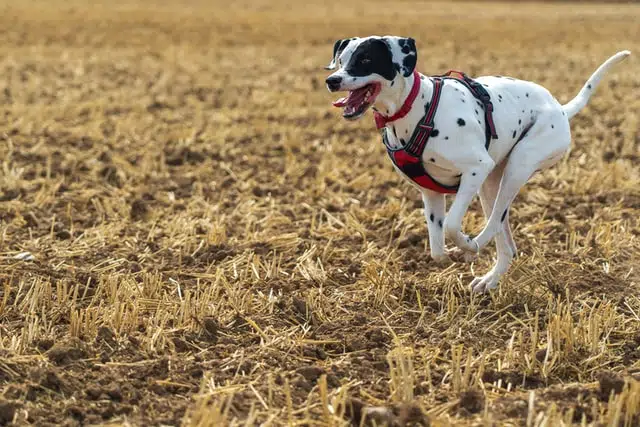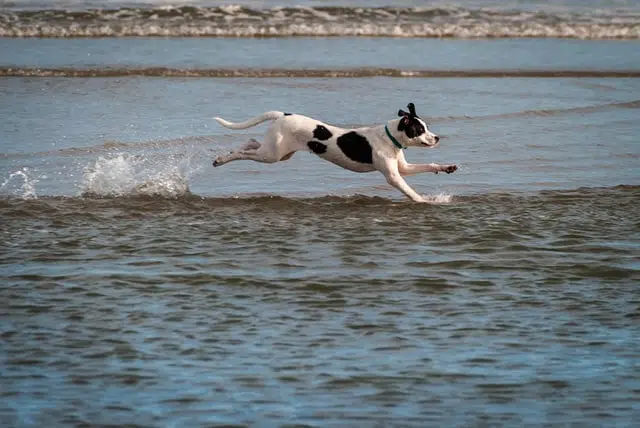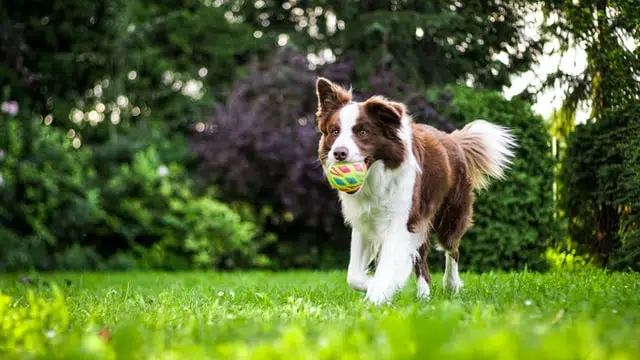Home » Blog » Pet » Pet Health & Safety » Dog Exercise Requirements By Breed: Active Dog Month
Categories
Tags
animal welfare
breed profile
buying a car
buying a pet
Car
car accessories
car care
car features
car insurance
Car safety
car sales
car service
cat
cat behaviour
cat body language
Cat Breeds
cat food
cat insurance
comprehensive car insurance
Dog
Dog Behaviour
dog body language
Dog Breeds
dog food
Dog Insurance
dog training
eco friendly cars
Kitten
New Car
pet accessories
pet activities
Pet Adoption
pet breeders
pet days of the year
pet fun stuff
Pet Health
pet insurance
pet parenting
Pet Safety
pet services
Puppy
rescue pets
road safety
road trip
safe driving
Recent Blog:
Facebook Posts
4 days ago
Are intestinal worms setting up camp in your dog’s gut without paying rent? Here’s how to spot the main culprits and get rid of them too:![]()
![]() Preventing, Identifying and Treating Intestinal Worms in Dogs - bit.ly/43YjCKu
... See MoreSee Less
Preventing, Identifying and Treating Intestinal Worms in Dogs - bit.ly/43YjCKu
... See MoreSee Less
Preventing, Identifying and Treating Intestinal Worms in Dogs
www.pd.com.au
Intestinal worms, such as roundworms in dogs are one of the least glamorous topics on the planet. These intestinal parasites that basically use our dogs
PD Insurance
with Dogs West.
6 days ago
We enjoyed meeting #breeders #doglovers and members at the Dogs West Open Day. Special thanks to our partner Dogs West for organising an incredible event. There is still time to enter our pawsome competition. Click here for details: bit.ly/4covyce![]() #PDinsurance #dogswestopenday #dogswest
... See MoreSee Less
#PDinsurance #dogswestopenday #dogswest
... See MoreSee Less
6 days ago
Did you know? The Manx is a breed that is known for its lack of a tail, which is caused by a genetic mutation.
... See MoreSee Less
We know daily exercise is good for both dogs and humans. But when it comes to dog exercise requirements, there’s a much bigger variety than for humans. Anyone who’s owned a Border Collie knows they need aaaa looot of exercise. Bulldog owners, on the other hand, know they often have to drag their pups out for a walk.
Because April is Active Dog Month, we’re checking out different dog exercise needs by breed. And although breed isn’t the only factor to consider, it definitely makes a difference to a dog’s energy levels and need for physical exercise.
So, whether you’re looking for a couch potato disguised as a furry friend or a dog who can keep up with your marathon-running ways, we’ve done our homework on what you need to know about different dog breeds and their exercise needs.
Why is Active Dog Month important?
First, why are we marking Active Dog Month? Well, we all know exercise is important. But on busy days, it’s easy to forget just how crucial a quick walk or game of fetch is to your dog – physically and mentally.
Plus, spending time playing, walking, biking, or taking trips to the beach with your dog helps to solidify your bond. And we think that’s something worth celebrating.
Active Dog Month is all about celebrating the benefits of dog exercise, for both pooch and owner. Yep, humans feel the impact of a host of physical benefits of having a dog. So it’s only fair we help them out too by giving them enough exercise.
Find out how Active Dog Month started here then read on.

Dog breed groups 101
Different dog breeds have different exercise needs. And whether you have a purebred dog, a mixed breed dog, or even a fancy designer dog, they all fall into one or more of the following groups.
PS: A dog DNA test can be a fun way to find out what breed your dog is! But you could also just go by your gut feel and any history you have. After all, you probably already have a good idea of their energy levels, physical traits, character, and health.
Here are the seven types of dog breed groups in Australia:
- Toy Group (e.g. Chihuahua, Pug, Maltese)
- Terrier Group (e.g. Jack Russell, Scottish Terrier, Staffordshire Bull Terrier)
- Gundog Group (e.g. Labrador Retriever, Cocker Spaniel, German Pointer)
- Hound Group (e.g. Beagle, Basset Hound, Dachshund)
- Working Dog Group (e.g. Border Collie, Australian Shepherd, Swedish Lapphund)
- Utility Group (e.g. Saint Bernard, Schnauzer, Dobermann, Rottweiler)
- Non-Sporting Group (e.g. Great Dane, French Bulldog, Dalmatian)
So, which of these dog breeds needs lots of exercise? And which need only a little?
Dog exercise needs by breed group
Although there’s quite a lot of variation within the groups, there are certain trends you’ll find.
Here’s a starting point to determine dog exercise needs:
- Toys usually need very little exercise. Think a short walk around the block or a little game of fetch.
- Terriers are lively and like to dig, so will need daily mid-intensity exercise to keep them content.
- Gundogs are bred to help hunters retrieve prey. They’re medium energy and usually need a couple of hours of exercise daily. Most gundogs love the water and are natural swimmers.
- Hounds fall into sighthounds and scenthounds. While sighthounds have low energy requirements (think Greyhounds or Afghan hounds), scenthounds like Beagles usually need at least an hour or so of exercise a day.
- Working dogs have very high exercise requirements. Don’t add one to your family if you’re not prepared for running, walking, and playing all day. They need high-intensity activities like running, and good mental stimulation too.
- Utility dogs were designed to pull sleds or rescue hikers, so have extraordinary stamina. They need an hour or two of exercise per day. But unlike working dogs, think slow and steady. They’d prefer a long-distance hike than a sprint around the block.
- Non-sporting dogs are a bit of a mixed bag. For instance, the Great Dane requires very little physical stimulation. A Dalmatian or Poodle, however, needs a lot of exercise as they are fairly high energy.
Age, personality, and health all come into dog exercise needs as well. And mixed breed dogs could lean more towards one side than another. A Collie cross Pug could be on either side of the spectrum, for instance. So, consider this more a guideline than anything else.

Dog breeds that don’t require much exercise
If you want a dog who you can spend all day cuddling and lying around with, Toy dogs are an ideal choice. Of course, you’ll have to break the routine with a quick walk or a game of fetch, but you won’t need to be running marathons.
So a Pomeranian, a Pug, or a Chihuahua could be the perfect companion.
But they aren’t the only good choice available to you. Some other dogs have very low energy requirements, including sighthounds and the occasional non-sporting dog.
If small dogs aren’t your thing, you could look at a Great Dane or an English Bulldog. Both require very little exercise and are quite content to offer cuddles and watch TV with you instead.
And though Greyhounds are often thought to be insanely high energy thanks to their racing background, they’re actually very chilled and low-energy. Most people are surprised to hear it, but it’s true.
They can, admittedly, turn on the accelerator for a brief time as needed though. Like when you’re chasing them for a bath, perhaps. (By the way, here’s why retired Greyhounds in Australia are so popular, and why they could make the perfect pet.)
A Dachshund is another good choice. Because of the prevalence of IVDD in Dachshunds, these dogs are better off not going for long walks, runs, or activities involving jumping.
Note they’re also prone to obesity, so you do need to get them exercising somehow. If they enjoy swimming, a good trip to the lake or beach can be beneficial for both you and them.
Dog breeds that need lots of exercise
Obviously, working dogs take the cake when it comes to dog exercise requirements. After all, they were bred to spend hours herding cattle in the fields.
If you want a dog to join in your active lifestyle, you’re spoilt for choice. It might be best to consider the type of exercise you enjoy best and choose a dog to suit your lifestyle. For example:
Do you want a dog to play with at the park as you drink your coffee and enjoy a jog? Then maybe you would enjoy an Airedale Terrier or a Beagle.
A dog who can join you on camping trips and weekend hikes? Perhaps a Husky or Saint Bernard would be right up your alley.
A dog who’ll accompany you as you train for next ultra-marathon? A Border Collie might be your perfect match.
One who’ll join you at the beach for surfing and swimming? You can’t beat a Golden Retriever or Labrador.

Dog health and exercise
Keep in mind some dogs are more likely to suffer from health issues or other limitations, which might change how much they can exercise. In addition to what breed group they fall into, here are some other considerations:
- Age. Just like us, dogs’ exercise needs change as they age. When they’re very small, too much exercise can put undue stress on their joints and soft tissues. Make sure to engage in suitable puppy play. And of course, when they’re much older, they’ll naturally slow down too.
- Size. The biggest dog breeds are more prone to musculoskeletal problems as they’re so heavy. If you own a giant dog, you might need to modify your exercise routine so you don’t strain their joints and bodies too much. Read exercising your dog without walking for some ideas.
- Musculoskeletal conditions. Big dogs are prone to musculoskeletal conditions, but they aren’t exclusive to large dogs. If you have a dog with IVDD, hip dysplasia, arthritis, cruciate disease, or similar, you’ll have to take extra precautions to not injure them.
- Snub-nosed breeds. Flat-nosed breeds like Pugs, French or English Bulldogs, Pekingese, and Boxers (amongst others) often have to be carefully exercised too. These dogs often have breathing syndromes and without proper management during exercise, they can overheat or even asphyxiate.
Pet insurance
Do you want pet insurance that covers your dog and gives you peace of mind? A dog (or cat) pet care plan can cover a variety of medical bills, from surgery and medication to hospitalisation and non-routine vet visits.
Plus, if you buy your policy online you’ll get one or more months of free pet insurance with PD Insurance!
Share On:




